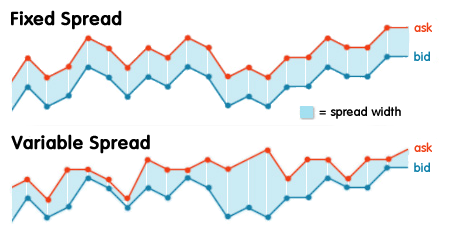In the realm of options trading, where precision and strategy reign supreme, spread trading stands as a powerful technique that empowers investors with the ability to mitigate risk and enhance returns. Embark on an illuminating journey as we delve into the intricacies of spread trading, unraveling its foundational principles, exploring its diverse applications, and distilling expert insights to guide your trading endeavors.

Image: corporatefinanceinstitute.com
Spread trading, in its essence, involves the simultaneous purchase and sale of two or more options contracts with different strike prices or expiration dates on the same underlying asset. This intricate interplay creates a spread, which encapsulates the difference between the premiums of the options involved. By carefully calibrating these spreads, traders can harness opportunities in a wide range of market scenarios.
Navigating the Spread Trading Landscape
To fully grasp the nuances of spread trading, it’s imperative to dissect its core components: strike price and expiration date. Strike price represents the specified price at which the underlying asset can be bought (in the case of call options) or sold (in the case of put options) at the contract’s expiration. Expiration date, as the name suggests, signifies the day on which the option contract expires, ceasing to hold any value.
The interplay of strike prices and expiration dates within a spread trading strategy assumes immense significance. Adjusting these parameters shapes the spread’s behavior, enabling traders to tailor their strategies based on market conditions and anticipated price movements of the underlying asset.
Spread trading presents a versatile approach to cater to varied market conditions and investment objectives. Let’s explore the diverse types of spreads to understand how traders harness their distinct characteristics:
- **Bull Call Spread:** Tailored for bullish market expectations, this spread involves buying a call option with a lower strike price and simultaneously selling a call option with a higher strike price. Traders anticipate an increase in the underlying asset’s value, generating potential profits within a defined range.
- **Bear Put Spread:** Designed for bearish market outlooks, this spread entails selling a put option with a higher strike price while buying a put option with a lower strike price. Traders benefit from declines in the underlying asset’s value, with maximum profits realized within a specific price range.
- **Straddle:** A neutral strategy suited for periods of high volatility, the straddle involves buying both a call and a put option with the same strike price and expiration date. Traders capitalize on significant price fluctuations in either direction, regardless of the underlying asset’s trend.
- **Strangle**: Similar to a straddle, the strangle employs a wider range by buying a call and a put option with different but adjacent strike prices and the same expiration date. This strategy leverages heightened volatility expectations, with profits generated from substantial price movements in either direction.

Image: www.andywltd.com
What Is Spread Trading In Options
Expert Insights: The Cornerstones of Successful Spread Trading
To refine our understanding, let’s delve into the expert advice that paves the way for successful spread trading:
- **Thorough Research and Analysis:** Market mastery is paramount. Meticulously research the underlying asset, historical price patterns, and market trends to establish a solid foundation for your trading decisions.
- **Risk Management Discipline:** Spread trading, while mitigating risks, is not immune to potential losses. Implement stringent risk management strategies, including defining stop-loss levels, to safeguard your capital.
- **Patience and Discipline:** Spread trading often involves waiting for favorable market conditions. Develop patience and adhere to your trading plan, avoiding impulsive decisions based on emotions.
Embrace spread trading as an invaluable tool in your options trading arsenal. By harnessing its potential, you elevate your ability to manage risk, amplify returns, and navigate market complexities with precision. Remember to approach spread trading with a well-informed strategy, an unwavering commitment to risk management, and unwavering patience. The path to successful spread trading unfolds before you, beckoning you to explore its boundless opportunities.






